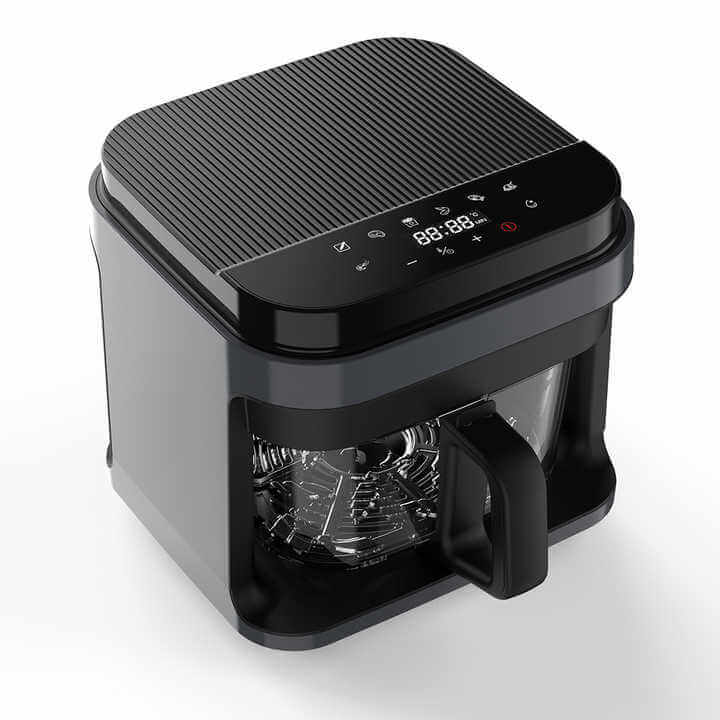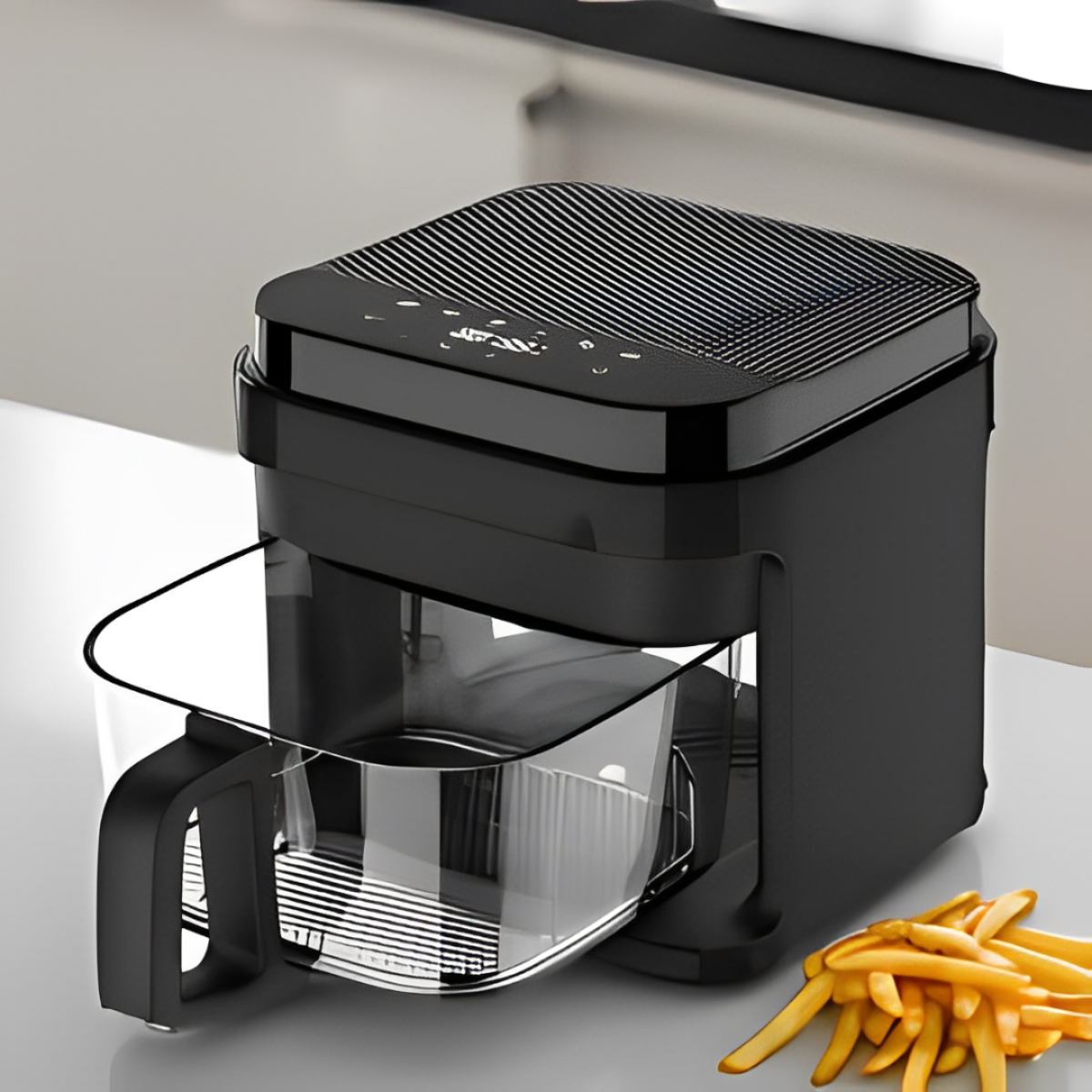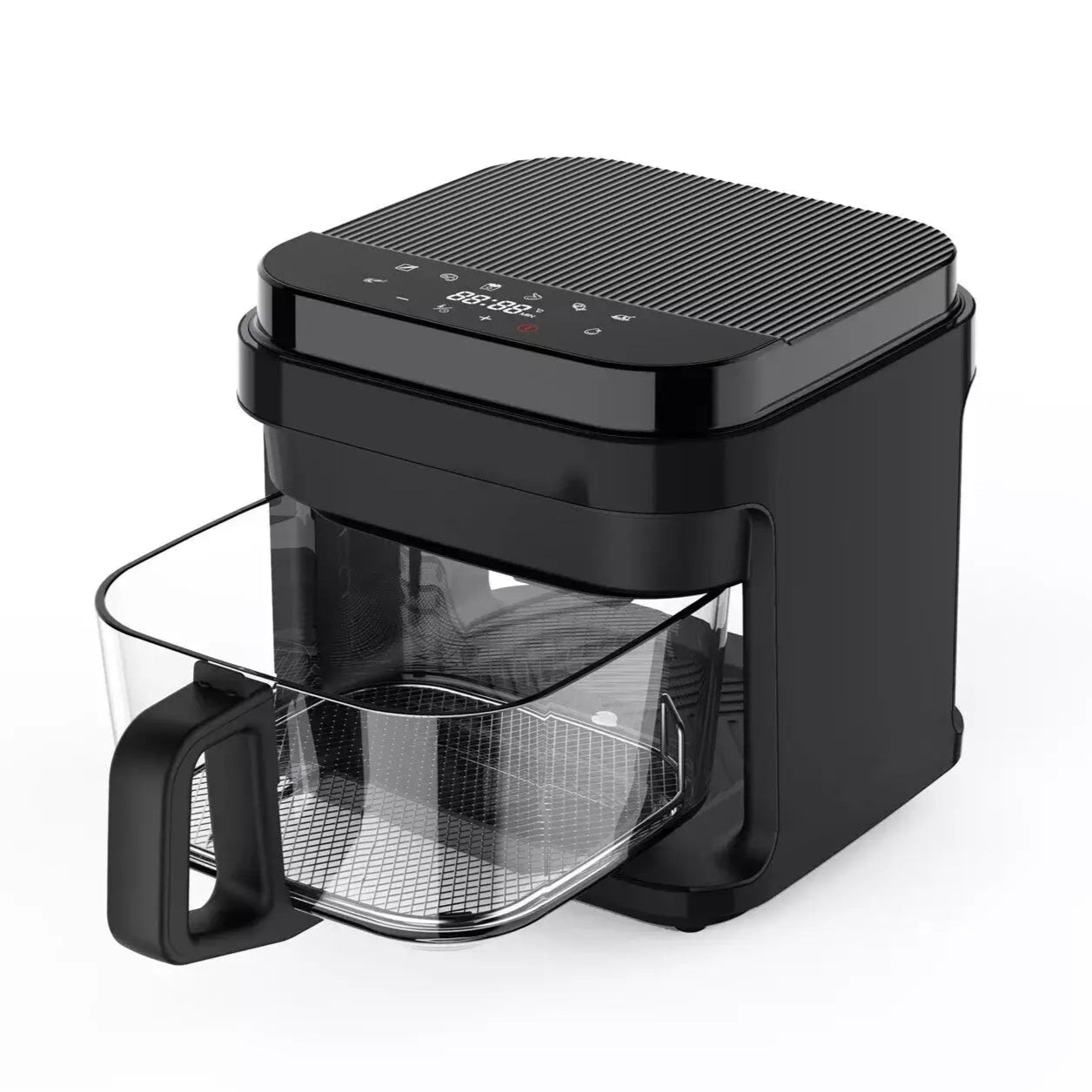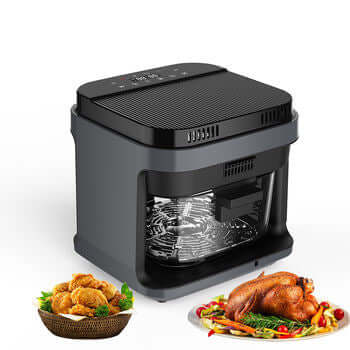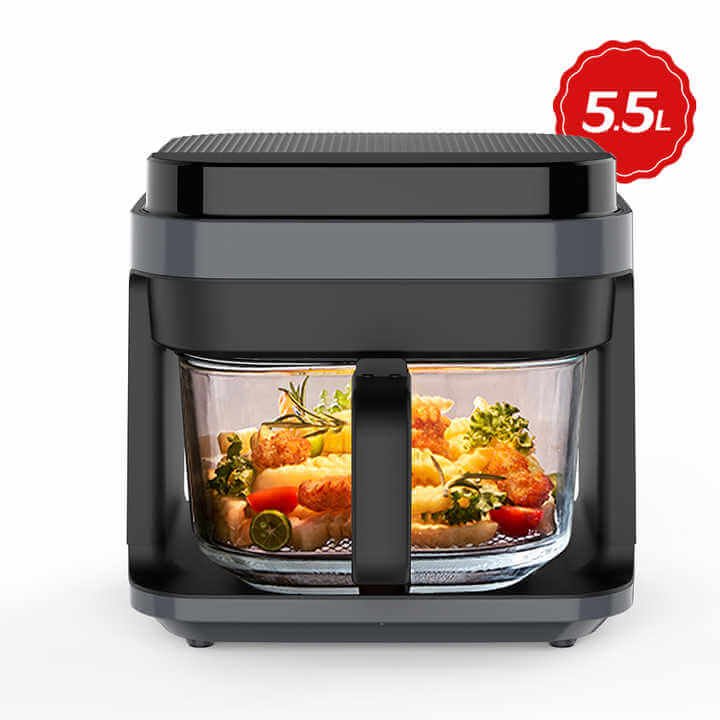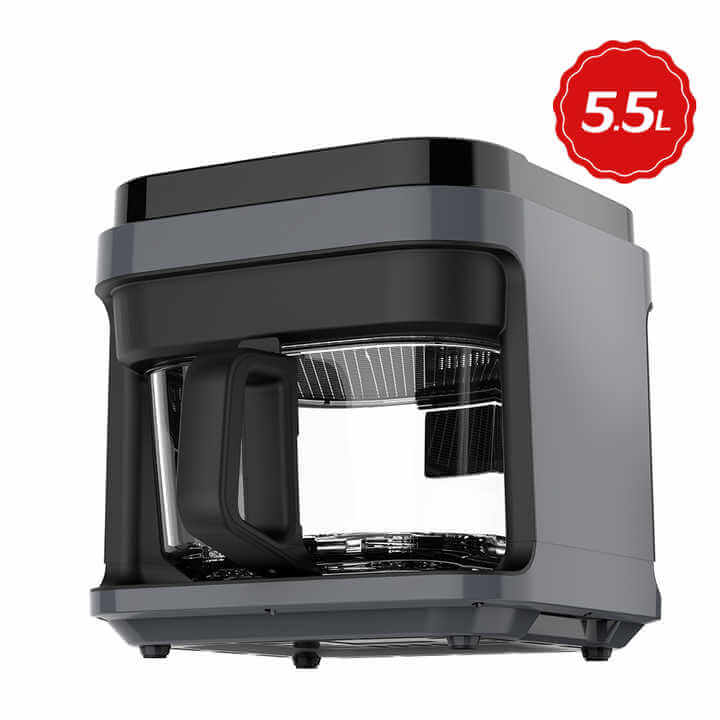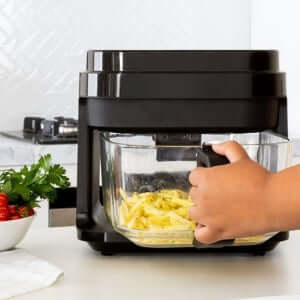The Ultimate Guide to Non-Toxic Air Fryers in Australia (2025)
What are the best non-toxic air fryers in Australia in 2025? The safest air fryers in Australia are glass, ceramic, and stainless steel models that are PFAS, PFOA, and PTFE free. Glass air fryers, like the Terra Wellness 5.5L, are chemical-free, easy to clean, and durable—making them the top choice for Aussie families prioritising health and safety.
In recent years, the air fryer has become a must-have kitchen appliance, beloved for its ability to create crispy, delicious meals with a fraction of the oil used in traditional frying. However, as health-conscious consumers, we are increasingly aware of the potential for toxins to leach from our cookware into our food. This has led to a growing demand for non-toxic air fryers, with glass air fryers emerging as a popular and safe alternative.
This comprehensive guide will explore the world of non-toxic air fryers, with a special focus on glass models. We will delve into the science behind non-toxic cooking, compare different materials, and provide you with all the information you need to choose the safest and best air fryer for your family. We will also be referencing the excellent Terra Wellness 5.5L Glass Air Fryer as a prime example of a high-quality, non-toxic option available in Australia.
The Dangers of Traditional Air Fryers: What You Need to Know About PFAS, PFOA, and PTFE
Many conventional air fryers on the market feature non-stick coatings made from polytetrafluoroethylene (PTFE), often marketed under the brand name Teflon. While these coatings offer convenience in terms of easy cleaning, they can pose significant health risks. When heated to high temperatures, PTFE can break down and release toxic fumes and particles, including perfluorooctanoic acid (PFOA), a type of per- and polyfluoroalkyl substance (PFAS) [1].
PFAS are a group of man-made chemicals that have been linked to a wide range of health problems, including cancer, liver damage, thyroid disease, and developmental issues [2]. These "forever chemicals" are incredibly persistent in the environment and can accumulate in the human body over time. The convenience of a non-stick surface simply isn't worth the potential health risks associated with these toxic chemicals.
According to the Environmental Working Group (EWG), a non-profit organization dedicated to protecting human health and the environment, "[PFAS] are a large family of thousands of fluorinated chemicals that are used to make products greaseproof, water-resistant, and long-lasting. They are also used in a variety of industrial processes and are found in firefighting foam. PFAS have been detected in the blood of 99% of Americans, and they have been linked to a variety of health problems, including cancer, thyroid disease, and developmental problems in children." [3]
Choosing a non-toxic air fryer is a crucial step in creating a healthier home environment and protecting your family from the dangers of these harmful chemicals.
The Rise of Non-Toxic Air Fryers: A Safer Way to Cook
Fortunately, there is a growing market for non-toxic air fryers that are free from harmful chemicals like PFAS, PFOA, and PTFE. These air fryers are typically made from materials like glass, ceramic, and stainless steel, which are all excellent alternatives to traditional non-stick coatings. By choosing a non-toxic air fryer, you can enjoy all the benefits of air frying without compromising your health.
Why Choose a Glass Air Fryer?
Glass air fryers, like the Terra Wellness 5.5L Glass Air Fryer, are becoming increasingly popular for a number of reasons:
•Non-Toxic and Safe: Glass is an inert material, meaning it won't react with your food or release harmful chemicals when heated. This makes it one of the safest materials for cooking.
•Transparency: The transparent glass bowl allows you to monitor your food as it cooks, so you can achieve the perfect level of crispiness without having to open the air fryer and interrupt the cooking process.
•Easy to Clean: Glass is non-porous and naturally non-stick, making it incredibly easy to clean. Most glass air fryer bowls are also dishwasher safe.
•Durable: High-quality borosilicate glass, like that used in the Terra Wellness model, is resistant to thermal shock and is incredibly durable.
By opting for a glass air fryer, you are making a conscious choice to prioritize your health and well-being, while still enjoying the convenience and delicious results of air frying.
Glass vs. Ceramic vs. Stainless Steel: A Comparison of
Non-Toxic Air Fryer Materials
While glass is an excellent choice for a non-toxic air fryer, it's not the only option available. Ceramic and stainless steel are also popular and safe alternatives to traditional non-stick coatings. Let's take a closer look at the pros and cons of each material:
| Material |
Pros |
Cons |
| Glass |
- Completely non-toxic and inert<br>- Transparent for easy monitoring<br>- Easy to clean and dishwasher safe<br>- Durable and resistant to thermal shock (borosilicate glass)
|
- Can be heavier than other materials<br>- Potential for breakage if dropped
|
| Ceramic |
- Non-toxic and free from PFAS, PFOA, and PTFE<br>- Excellent non-stick properties<br>- Scratch-resistant
|
- Can chip or crack over time<br>- Non-stick properties may degrade with use
|
| Stainless Steel |
- Durable and long-lasting<br>- Non-reactive and safe for cooking<br>- Can be used at high temperatures
|
- Not naturally non-stick, so may require more oil or careful cooking techniques<br>- Can be more difficult to clean than glass or ceramic
|
Ultimately, the best non-toxic air fryer material for you will depend on your individual needs and preferences. However, for those who prioritize safety, transparency, and ease of cleaning, a glass air fryer like the Terra Wellness 5.5L Glass Air Fryer is an excellent choice.
What to Look for When Buying a Non-Toxic Air Fryer
When shopping for a non-toxic air fryer, there are several key factors to consider to ensure you're making the safest and best choice for your family:
Material Safety Certifications
Look for air fryers that are certified as PFAS-free, PFOA-free, and PTFE-free. Reputable manufacturers will clearly state these certifications on their packaging and marketing materials. Additionally, look for certifications from organizations like the FDA or other relevant health authorities in your region.
Construction Quality
The quality of construction is crucial for both safety and durability. For glass air fryers, ensure the glass is made from high-quality borosilicate glass, which is more resistant to thermal shock than regular glass. The Terra Wellness 5.5L Glass Air Fryer, for example, uses premium borosilicate glass that can withstand rapid temperature changes without cracking.
Size and Capacity
Consider your family size and cooking needs when choosing an air fryer. A 5.5-liter capacity, like the Terra Wellness model, is ideal for families of 4-6 people and can accommodate whole chickens, large batches of vegetables, or multiple servings of your favorite foods.
Temperature Range and Controls
Look for an air fryer with a wide temperature range (typically 80°C to 200°C) and precise temperature controls. Digital displays and preset cooking programs can make the cooking process more convenient and consistent.
Ease of Cleaning
Non-toxic air fryers should be easy to clean to maintain their safety and performance. Glass bowls are naturally non-stick and dishwasher safe, making cleanup effortless. Avoid models with hard-to-reach crevices where food particles can accumulate.
The Science Behind Non-Toxic Cooking
Understanding the science behind why certain materials are safer than others can help you make informed decisions about your cookware. When traditional non-stick coatings are heated to high temperatures (above 260°C), they begin to break down and release toxic fumes containing perfluorinated compounds [4].
These compounds can cause polymer fume fever in humans, a condition characterized by flu-like symptoms including fever, chills, and respiratory irritation [5]. More concerning are the long-term health effects of chronic exposure to these chemicals, which have been linked to various health conditions including thyroid disorders, high cholesterol, and certain cancers [6].
Glass, ceramic, and stainless steel, on the other hand, are chemically inert materials that don't break down or release harmful compounds when heated. This makes them inherently safer choices for cooking at high temperatures.
Health Benefits of Using a Non-Toxic Air Fryer
Choosing a non-toxic air fryer offers numerous health benefits beyond simply avoiding harmful chemicals:
Reduced Oil Consumption
Air fryers use hot air circulation to create crispy textures with minimal oil. This can significantly reduce your calorie intake and help maintain a healthier diet. Studies have shown that air-fried foods contain up to 75% less fat than traditionally deep-fried foods [7].
Preservation of Nutrients
The rapid cooking process of air frying helps preserve heat-sensitive vitamins and minerals that might be lost during longer cooking methods. Vegetables retain more of their vitamin C content when air-fried compared to boiling or steaming [8].
Reduced Formation of Harmful Compounds
Air frying produces fewer harmful compounds like acrylamide compared to deep frying. Acrylamide is a potentially carcinogenic compound that forms when starchy foods are cooked at high temperatures [9].
Maintenance and Care for Your Non-Toxic Air Fryer
Proper maintenance is essential to ensure your non-toxic air fryer continues to perform safely and effectively:
Daily Cleaning
After each use, allow the air fryer to cool completely before cleaning. For glass air fryers, the bowl can typically be removed and washed in warm, soapy water or placed in the dishwasher. Wipe down the exterior with a damp cloth.
Deep Cleaning
Perform a deep clean weekly or as needed. For stubborn food residue, soak the glass bowl in warm water with a mild detergent. Avoid abrasive cleaners or scrubbers that could damage the surface.
Regular Inspection
Regularly inspect your air fryer for any signs of wear or damage. For glass models, check for chips or cracks that could compromise safety. Replace any damaged components immediately.
Environmental Impact of Non-Toxic Air Fryers
Choosing a non-toxic air fryer isn't just better for your health—it's also better for the environment. Traditional non-stick coatings contain PFAS chemicals that persist in the environment for decades, earning them the nickname "forever chemicals" [10].
When these coatings eventually wear out and the cookware is disposed of, these chemicals can leach into soil and water systems, contaminating the environment for future generations. By choosing air fryers made from glass, ceramic, or stainless steel, you're making a more sustainable choice that doesn't contribute to this environmental pollution.
Cost Considerations and Value
While non-toxic air fryers may have a higher upfront cost compared to traditional models, they offer excellent value in the long term:
Durability
High-quality materials like borosilicate glass and stainless steel are more durable than non-stick coatings, which can wear out and need replacement within a few years.
Health Savings
The potential health benefits of avoiding toxic chemicals could translate to significant healthcare savings over time.
Performance
Non-toxic air fryers often perform better than their traditional counterparts, providing more even cooking and better results.
Recipes and Cooking Tips for Non-Toxic Air Fryers
Getting the most out of your non-toxic air fryer requires understanding how to use it effectively:
Temperature Guidelines
Most foods cook well at temperatures between 160°C and 180°C. Start with lower temperatures for delicate items and increase as needed.
Cooking Times
Air fryers cook faster than traditional ovens, so reduce cooking times by about 20-25% when adapting recipes.
Food Preparation
Lightly coat foods with a small amount of oil for better browning and crisping. Use oils with high smoke points like avocado or coconut oil.
The Future of Non-Toxic Cooking
The demand for non-toxic cookware is growing as consumers become more health-conscious and environmentally aware. This trend is driving innovation in the industry, with manufacturers developing new materials and technologies that are both safe and effective.
Glass air fryers represent just one example of this innovation. As technology continues to advance, we can expect to see even more options for safe, non-toxic cooking appliances that don't compromise on performance or convenience.
Conclusion
Choosing a non-toxic air fryer is one of the best investments you can make for your family's health and well-being. By opting for materials like glass, ceramic, or stainless steel, you can enjoy all the benefits of air frying without exposing yourself and your loved ones to harmful chemicals.
The Terra Wellness 5.5L Glass Air Fryer exemplifies what to look for in a non-toxic air fryer: high-quality borosilicate glass construction, excellent performance, and a commitment to safety. With proper care and maintenance, a quality non-toxic air fryer will serve you well for years to come, providing delicious, healthy meals while giving you peace of mind about the safety of your cookware.
Remember, when it comes to your health, it's always better to invest in quality, non-toxic options that will protect you and your family for the long term. Your future self will thank you for making the switch to non-toxic cooking today.
Use code BLOG20 for 20% OFF today.
FAQs About Non-Toxic Air Fryers in Australia
Q1: Why should I choose a non-toxic air fryer in Australia?
A: Non-toxic air fryers avoid PFAS, PFOA, and PTFE coatings that can release harmful chemicals, protecting your health and the environment.
Q2: Are glass air fryers better than ceramic or stainless steel?
A: Yes—glass is completely inert, toxin-free, transparent for easy monitoring, and easy to clean. Ceramic and stainless steel are safe too when certified.
Q3: How do I know if an air fryer is PFAS-free?
A: Look for clear certifications such as PFAS-free, PFOA-free, PTFE-free, plus testing or documentation from reputable brands.
Q4: What size non-toxic air fryer is best for my family?
A: For Aussie households, 3–5L suits couples or small families, while 5–6L models (like Terra Wellness) are ideal for families of 4–6.
Q5: Are non-toxic air fryers more expensive in Australia?
A: Typically yes, but they last longer, perform better, and protect against health risks—making them a worthwhile long-term investment.
Q6: Do non-toxic air fryers still reduce oil and fat?
A: Absolutely. They cut oil use by up to 75% compared to deep frying, while also preserving more nutrients and reducing harmful compounds.
For further reading please refer to:
How to Clean an Air Fryer Glass Door? Streak-Free Tips That Work
Least Toxic Air Fryer for Healthy Cooking in Australia (2025) | Teflon-Free Picks






